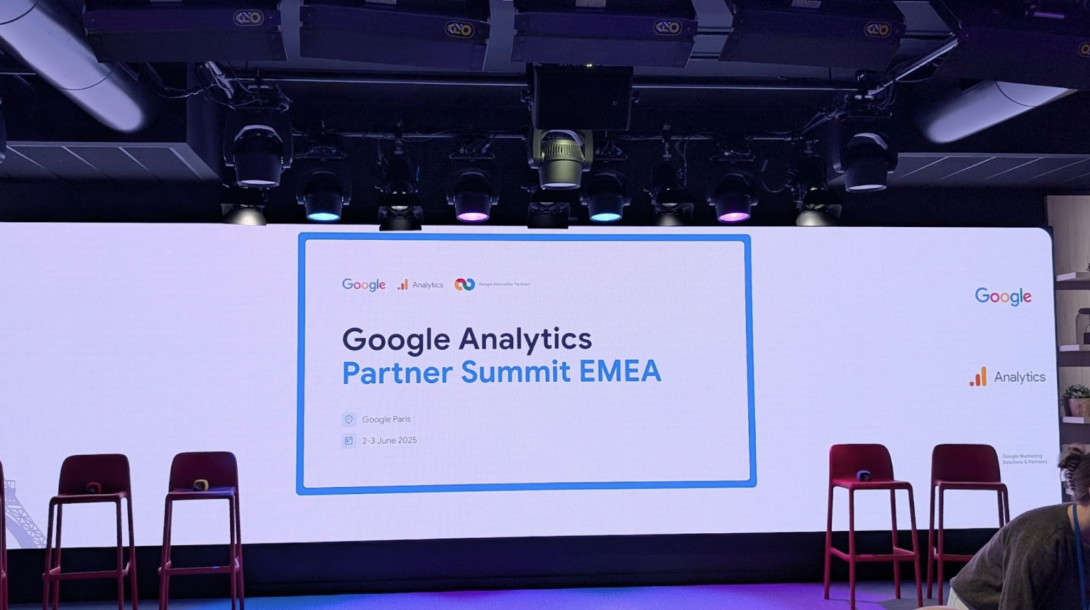The Google Analytics Partner Summit in Paris last month gave us a look into the future of Google Analytics.
The analytics platform is moving towards becoming a cross-channel measurement and planning tool with unified reporting, improved UI and the integration of smart AI functionality to support new and advanced analytics users. Here’s a roundup of the key highlights and takeaways from the two-day event.
Enhanced data accuracy
The constant shift in privacy regulations and browser restrictions has made measurement accuracy more challenging. New implementations and migrations of past years may still suffer from misconfiguration that are impacting data collection and accuracy. To aid with this issue, Google is rolling out a few key features to ensure enhanced data collection:
- UI feedback to help troubleshoot data collection and implementation issues
- Aggregate identifiers which will allow for better cross-channel measurement
- Data labelling in the UI to surface when all data has been processed
These continuous updates really display the power of Google, as they strive to provide the best possible data quality in Google Analytics, while supporting best practice implementation and leveraging AI to plug the measurement gaps where possible.
Improved UI & reporting dashboard
A large focus at this year’s Partner Summit was on usability and developing better ways to surface insights. One of the great Google Analytics features is the ability to customise nearly everything in the UI. However, this comes at the price of usability especially when trying to cater to multiple profiles and roles within a company. To help combat these drawbacks, Google is bringing a number of key updates that will allow greater flexibility:
- AI insights in UI to highlight traffic trends and potential issues
- Better filtering and segmentation in UI
- Customisable dashboards within Google Analytics
These updates are welcome, and we look forward to seeing how they will be received by users. The new dashboard will make way for a flexible tool and support self-sufficiency across different functions of the business.

Google Analytics as a cross-channel budget forecasting tool
Google is working with third-party partners to enhance Google Analytics’ capcity to ingest data from external sources such as MailChimp and Salesforce. These updates will allow users to unify spend and advertising data across all marketing channels and leverage the future scenario planning tools within Google Analytics to optimise budget allocation based on specific KPI and budget.
This development shows commitment from Google to widen the scope of data available in Google Analytics and make the shift from Google Analytics being an analysis platform to a more action and media-oriented tool. The success of this shift will depend on how unified advertisers operate, and make budget and media decisions, as we often found these decisions can be siloed and therefore fragmented across the different media channels and owners. Ultimately this is a shift toward bringing multi-touch attribution beyond clicks in the platform.
AI as an assistant
It comes as no surprise that Google is releasing AI updates to Google Analytics, especially with the rollout of an analytics chat that will support analysts and marketers in finding key information about their property, identifying data trends and collecting insights. The quality of the data collected remains an essential part of getting good output from AI.
The release of an AI assistant is particularly exciting. This will make decision making easier and more straightforward for new users of Google Analytics, and will also provide support for experienced Analytics users, helping them streamline workflows and trim valuable analysis time.
In summary
The future developments of Google Analytics show clear commitment to drive confidence in data collection in an era of ever-stringent regulations and browser restrictions. The rise of AI as an assistant will support the use of the platform and allow more users to quickly get to speed, whilst more advanced advertisers can leverage Google Analytics’ future abilities to ingest multi-channel cost and advertising data, bringing planning and budgeting under the same roof.
If you'd like to talk more on any of the topics mentioned in this blog, please get in touch for further assistance.



